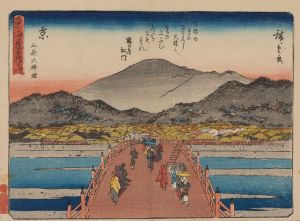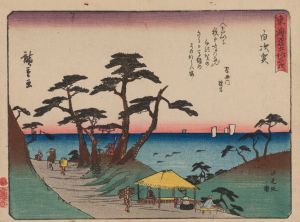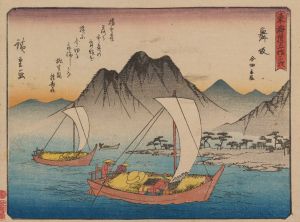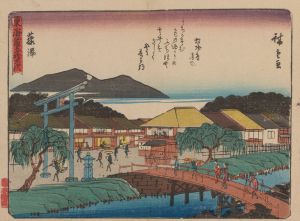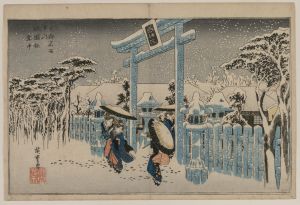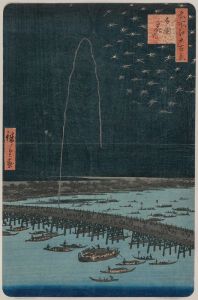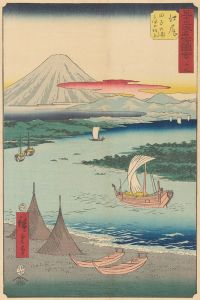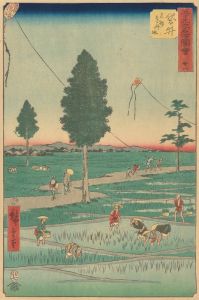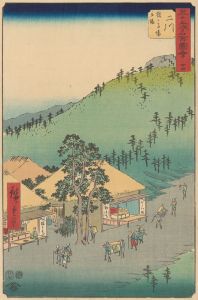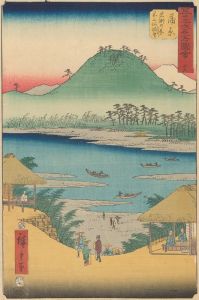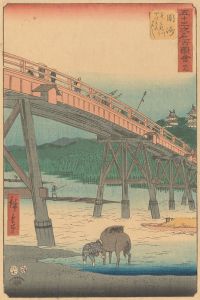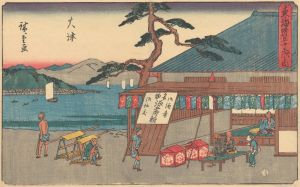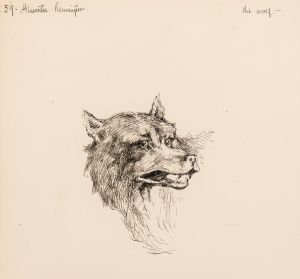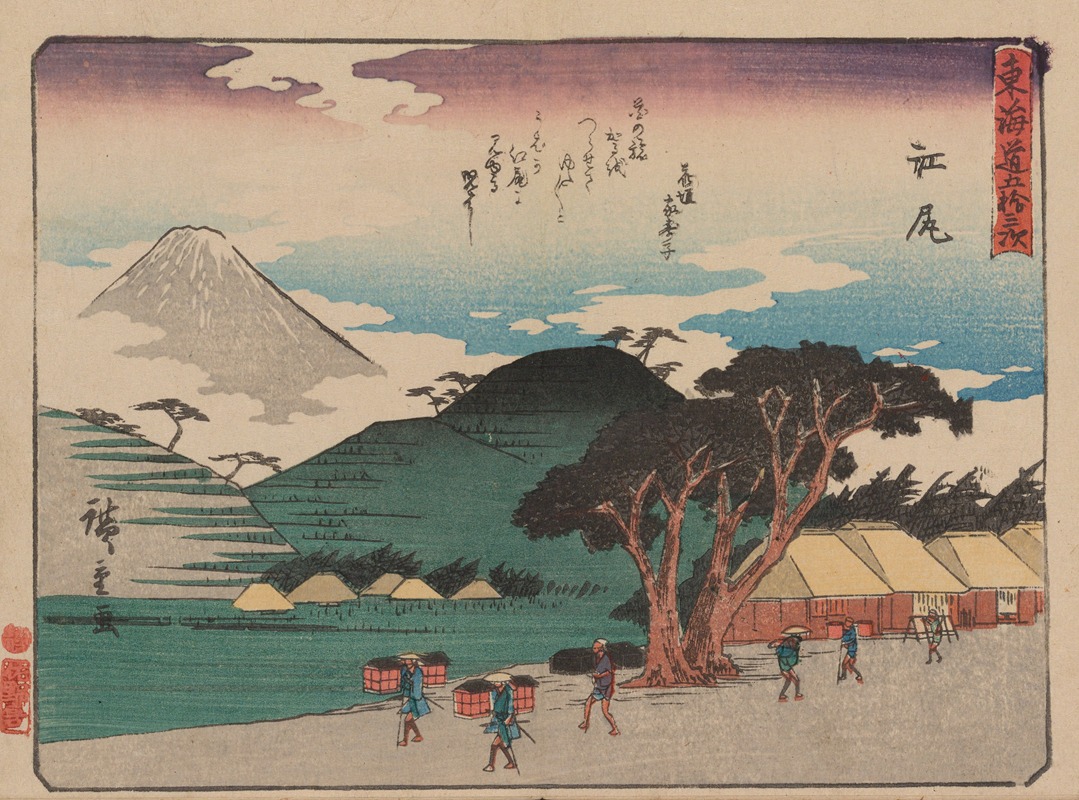
Tokaido gojusantsugi, Pl.19
A hand-painted replica of Andō Hiroshige’s masterpiece Tokaido gojusantsugi, Pl.19, meticulously crafted by professional artists to capture the true essence of the original. Each piece is created with museum-quality canvas and rare mineral pigments, carefully painted by experienced artists with delicate brushstrokes and rich, layered colors to perfectly recreate the texture of the original artwork. Unlike machine-printed reproductions, this hand-painted version brings the painting to life, infused with the artist’s emotions and skill in every stroke. Whether for personal collection or home decoration, it instantly elevates the artistic atmosphere of any space.
Andō Hiroshige, a renowned Japanese ukiyo-e artist of the Edo period, is celebrated for his landscape prints and his series "The Fifty-three Stations of the Tōkaidō" (Tokaido gojusantsugi). This series, created between 1833 and 1834, consists of 55 woodblock prints depicting the scenic views along the Tōkaidō road, which was the most important of the Five Routes of the Edo period in Japan, connecting Edo (modern-day Tokyo) to Kyoto.
Plate 19 of this series is one of the prints that capture the essence of travel and the diverse landscapes encountered along the Tōkaidō. Each print in the series represents a station along the route, offering a glimpse into the daily life and natural beauty of Japan during this era. Hiroshige's work is characterized by its attention to detail, vibrant colors, and the ability to convey the atmosphere and mood of each location.
The Tōkaidō road was a vital artery for commerce and travel, and it was frequented by a variety of people, including samurai, merchants, and pilgrims. Hiroshige's prints not only depict the physical journey but also reflect the cultural and social aspects of the time. His work is known for its poetic and sometimes humorous portrayal of travelers and the landscapes they traverse.
Hiroshige's style in this series is marked by the use of perspective and innovative compositions, which were influenced by Western art techniques that were beginning to permeate Japan during this period. The prints often feature a foreground, middle ground, and background, creating a sense of depth and inviting the viewer to explore the scene.
The popularity of "The Fifty-three Stations of the Tōkaidō" series was significant, as it provided many people who would never travel the route themselves with a visual journey through these famous locations. The series was not only an artistic achievement but also a commercial success, establishing Hiroshige as one of the leading ukiyo-e artists of his time.
Hiroshige's work had a lasting impact on both Japanese and Western art. His influence can be seen in the works of Western artists such as Vincent van Gogh and Claude Monet, who admired the composition and use of color in Japanese prints. Hiroshige's ability to capture the transient beauty of nature and the human experience continues to resonate with audiences today.
While specific details about Plate 19 are not provided here, it is part of a larger narrative that celebrates the journey along the Tōkaidō. Each print in the series contributes to a comprehensive portrayal of this iconic road, offering insights into the historical and cultural context of Edo-period Japan. Hiroshige's legacy endures through his masterful depiction of landscapes and his unique ability to convey the spirit of a place and time.





